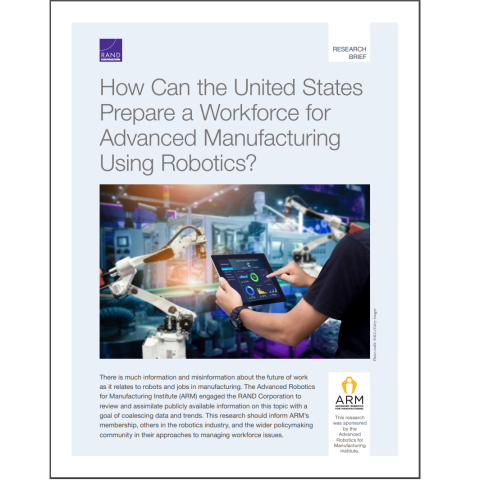Manufacturing in the United States has experienced a bit of a renaissance of late, with a notable increase in the number of individuals employed in manufacturing since 2010. Many experts expect additional job opportunities in manufacturing as large numbers of existing workers retire and advancing technologies, such as robotics, create new positions not previously seen on the typical manufacturing floor.

Importantly, these manufacturing jobs will likely pay wages higher than the national average for equivalent positions in other industries, according to a 2017 report by the National Academies of Sciences, Engineering, and Medicine, Building America's Skilled Technical Workforce. But experts also warn that workers will likely need more-specialized skills to engage with advancing robotics and other technologies in manufacturing.
To assist workers and employers in preparing for this shift, RAND researchers addressed the following questions related to preparing a robotics-ready manufacturing workforce: What is the economic context of manufacturing using robotics? How are current education and training programs preparing people to work with robots in manufacturing? And finally, what practices might improve these programs and their desirable outcomes, such as a job-ready workforce?

